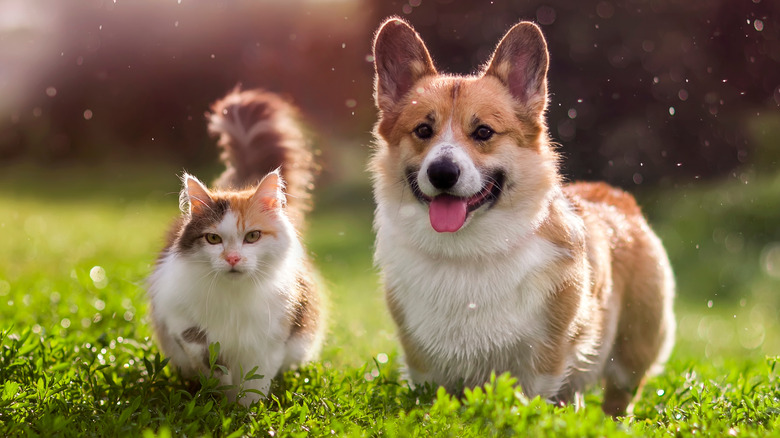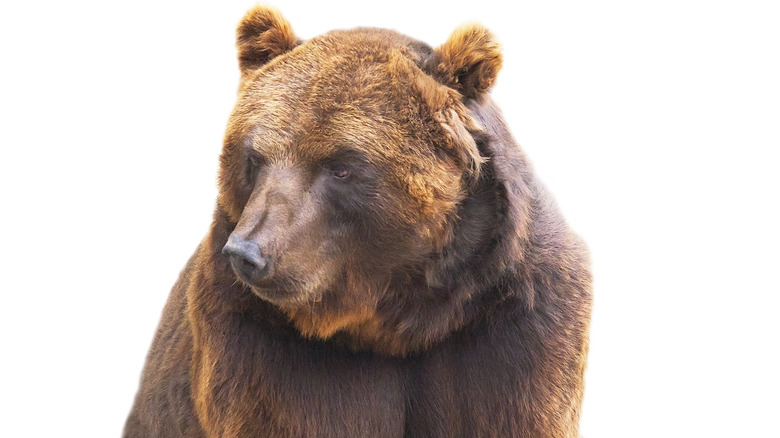A Cambridge University Dog Had To Be Classified As A Cat Because Of A Strange Rule
The eternal question animal lovers can't resist posing is, are you a dog person or a cat person? Really, there's no need to choose a side, but our canine and feline friends both have their foibles. A cat wearing a leash is certainly a rare sight, while dogs are perhaps a little less prone to intentionally pushing priceless antique ornaments off tabletops, as is often a cat's wont.
Differences in temperament, energy level, and so on are generally unique to individuals, more than species. So, you can never be quite sure what you're letting yourself in for when you plump for a cat over a dog or vice versa. It tends to be a given, though, that you can tell the difference between a dog and a cat.
For the great minds at Cambridge University, though, it seems that this isn't such a clear-cut issue after all. The noble institution has curious rules about pet ownership, and in the case of one beloved animal, the not-so-gray lines between dog and cat were blurred to get around them.
Bears were fine pets at Cambridge, but dogs aren't
Roger Mosey took the role of master at Cambridge University's prestigious Selwyn College in October of 2014, as reported by the BBC. During what was presumably the usual furor of starting a new job, Mosey had an unusual problem: a basset hound named YoYo. Naturally, a loving basset hound would be the opposite of a problem for many people, but Mosey explained that dogs are "technically" banned from living at the university.
As Cambridge City Council reports, the city has certain rather strict restrictions on dog control. One of these rules stipulates that "you are not permitted to take more than four dogs on Byron's Pool local nature reserve at any time."
Mention of the name Byron naturally leads to the famous anecdote that Lord Byron, while studying at Trinity College at the turn of the 19th century, found that dogs were indeed banned, so he promptly brought a tame bear. He wrote in a letter of October 1807, per University of Cambridge, "I have got a new friend, the finest in the world, a tame bear. When I brought him here, they asked me what to do with him, and my reply was, 'he should sit for a fellowship'."
The bear would presumably not study at Cambridge, and there would be no fellowship for Mosey's own companion, YoYo, over two centuries later. However, the basset hound was allowed to stay, thanks to one hilarious loophole.
How a basset hound became classified as a 'very large cat'
Speaking to staff at the university, Roger Mosey argued his case by reminding everyone that former Master Professor Owen Chadwick had various canine companions during his own tenure in the middle of the twentieth century, according to the BBC. On Chadwick's sad death in July of 2015, Selwyn College paid tribute to its "longest-serving Master, and the most distinguished historian and theologian of his time." Unsurprisingly, evoking Chadwick's name seemed to win the day.
Mosey was indeed allowed to keep his dog, and YoYo would live with him in the Master's Lodge. However, Selwyn also made the interesting decision of noting that YoYo would be deemed a "Very Large Cat," at least officially (per the BBC).
This way, the university managed to uphold its reputation as being a stickler for the rules, while also acknowledging its past and having a little whimsical fun too. The BBC states that YoYo became a beloved figure, and her image was used in some of Selwyn College's official releases.


